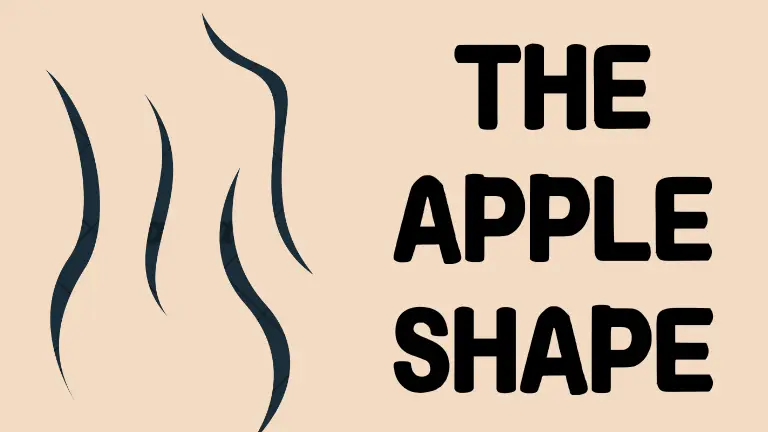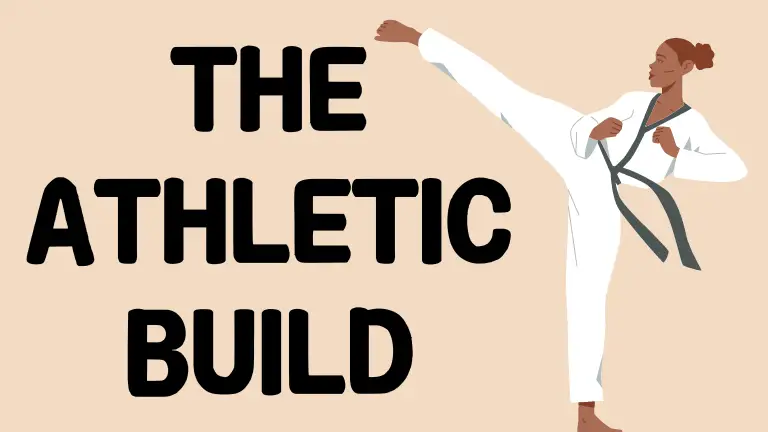Modern society often sets unrealistic standards for women’s bodies. However, understanding and celebrating diverse body types can foster body positivity and healthier lifestyles. This blog post aims to demystify the concept of body type in women, helping you appreciate your unique shape and make informed choices about fitness and health.
What Defines a Woman’s Body Type?
Genetic Playbook
Genetics play a pivotal role in determining body type in women. Your DNA influences how and where your body stores fat, the shape of your skeletal structure, and even your metabolic rate. While you can’t change your genes, understanding their impact can guide you in making better health and fitness choices.
Hormonal Influences
Hormones significantly affect body composition. Estrogen, for example, often leads to fat storage around the hips and thighs, giving many women a pear-shaped body type. Conversely, higher levels of testosterone can result in a more apple-shaped figure. Hormonal imbalances, such as those caused by polycystic ovary syndrome (PCOS), also alter body shape and weight distribution.
Lifestyle Factors
Your lifestyle choices, including diet, exercise, and stress management, greatly influence your body type. Regular physical activity and a balanced diet can help you maintain a healthy weight and improve muscle tone, regardless of your genetic predispositions.
Read More. Food Substitutes for Rice
The Classic Body Types
The Hourglass Figure

The hourglass figure is often celebrated for its balanced and curvaceous silhouette, characterized by a bust and hips that are nearly equal in size, with a well-defined, narrow waist. This classic body shape is often associated with femininity and allure, reminiscent of a traditional hourglass.
Characteristics of the Hourglass Figure:
- Balanced bust and hip measurements.
- A distinctly narrow and defined waist.
- Curved silhouette with proportional upper and lower body.
- Often has a fuller bust and hips, creating a harmonious balance.
Common Misconceptions:
One common misconception is that the hourglass figure is the ideal or only attractive body shape. While it is often praised, every body type is unique and beautiful in its own way. It’s important to embrace the hourglass figure without diminishing the allure of other shapes.
Embracing and Enhancing the Hourglass Figure:
- Exercise Tips: To maintain and accentuate an hourglass figure, focus on exercises that enhance overall muscle tone while preserving curves. Strength training, particularly for the core, can help maintain a defined waist. Workouts like pilates and yoga can improve flexibility and posture, highlighting the natural curves of this body type.
- Fashion Advice: Dressing an hourglass figure involves accentuating the waist and celebrating the natural curves. Choose form-fitting clothing that highlights the waist, such as wrap dresses, belts, and high-waisted skirts. V-neck tops and fitted blouses can complement the bust, while pencil skirts and bodycon dresses can showcase the hips and waist beautifully.
- Body Positivity: Embracing body positivity is vital for individuals with an hourglass figure. Recognizing the unique beauty and balance of this shape encourages self-love and confidence. Engaging with communities that celebrate body diversity can offer support and affirmation, emphasizing that all body types, including the hourglass figure, are worthy of appreciation and admiration.
The Pear Shape

The pear-shaped body type is characterized by hips and thighs that are wider than the bust and shoulders, creating a silhouette reminiscent of a pear. This shape is often associated with a smaller, more defined waist and a graceful, curvaceous lower body.
Characteristics of the Pear Shape:
- A defined waistline.
- Hips that are wider than the shoulders.
- A smaller bust compared to the hip area.
- Fuller thighs and legs.
Common Misconceptions:
One common misconception is that individuals with a pear-shaped body should aim to “correct” their proportions to resemble an hourglass figure. However, it’s important to embrace the natural beauty of the pear shape and focus on enhancing its unique features rather than altering them.
Embracing and Enhancing the Pear Shape:
- Exercise Tips: To create a balanced physique, focus on exercises that build upper body strength and tone the lower body. Upper body workouts like shoulder presses, push-ups, and rowing can help accentuate the shoulders and arms. For the lower body, exercises such as squats, lunges, and leg lifts can firm and sculpt the hips and thighs.
- Fashion Advice: Dressing for a pear-shaped body involves highlighting the waist and adding volume or interest to the upper body. Choose tops with embellishments, bright colors, or patterns to draw attention upwards. A-line skirts and dresses can beautifully accentuate the waist while skimming over the hips. High-waisted pants and skirts can also enhance the natural curves of a pear shape.
- Body Positivity: Embracing body positivity is crucial for individuals with a pear shape. Recognizing that all body types have their own unique beauty helps foster self-love and acceptance. Engaging with communities that celebrate body diversity can provide support and encouragement, reinforcing the message that every shape is beautiful and worthy of appreciation.
The Apple Shape

The apple-shaped body type is characterized by a fuller midsection with a tendency to store fat around the abdomen, creating a rounder silhouette. This body type often features broader shoulders and a less defined waist, with slimmer hips and legs.
Characteristics of the Apple Shape:
- A wider waistline and fuller torso.
- Broader shoulders compared to the hips.
- A larger bust in some cases.
- Slimmer arms and legs.
Common Misconceptions:
A prevalent misconception is that the apple-shaped body must conform to an hourglass figure to be attractive. In reality, the apple shape is unique and beautiful in its own right, and embracing its natural contours is key to feeling confident and empowered.
Embracing and Enhancing the Apple Shape:
- Exercise Tips: Focus on exercises that promote overall fitness and emphasize the lower body to create balance. Cardiovascular activities like walking, cycling, and swimming are excellent for maintaining a healthy weight and improving heart health. Core-strengthening exercises, such as planks and pilates, can help tone the abdomen and enhance posture.
- Fashion Advice: Dressing an apple-shaped body involves creating the illusion of a defined waist and highlighting the legs. Opt for V-neck tops and wrap dresses to elongate the torso and draw attention upwards. Empire waistlines and A-line dresses can beautifully accentuate the bust while skimming over the midsection. Skinny jeans and leggings can showcase the legs, adding balance to the overall look.
- Body Positivity: Embracing body positivity is essential for individuals with an apple shape. Recognizing the unique beauty of every body type encourages self-love and acceptance. Engaging with communities that celebrate diversity in body shapes can provide valuable support and inspiration, reinforcing the idea that all shapes are worthy of appreciation.
The Athletic Build

The athletic build body type is often characterized by a muscular and toned physique, with broad shoulders and a narrow waist and hips. This body type typically reflects a high level of fitness and strength, often associated with athletes or individuals who engage in regular physical activity.
Characteristics of the Athletic Build:
- Broad shoulders and a strong upper body.
- Well-defined muscles throughout the body.
- A narrow waist and hips.
- A generally proportionate figure with an emphasis on muscle tone.
Common Misconceptions:
A common misconception is that individuals with an athletic build are too muscular or lack femininity. However, this body type exemplifies strength and capability, and celebrating its unique form is essential to embracing one’s natural physique.
Embracing and Enhancing the Athletic Build:
- Exercise Tips: To maintain and enhance an athletic build, focus on a balanced fitness routine that includes both strength training and flexibility exercises. Weightlifting, resistance training, and circuit workouts can help build and define muscles. Incorporating activities like yoga or pilates can improve flexibility and balance, ensuring a well-rounded fitness regimen.
- Fashion Advice: Dressing an athletic build can involve highlighting the body’s natural shape and accentuating its strengths. Choose fitted clothing that showcases your muscle tone, such as structured jackets or tailored tops. Opt for high-waisted jeans and skirts to emphasize the waist and create a balanced silhouette. Sleeveless tops and dresses can beautifully display strong arms and shoulders.
- Body Positivity: Embracing body positivity is crucial for those with an athletic build. Recognizing the power and capability of this body type promotes self-love and confidence. Engaging with communities that celebrate diverse body shapes can provide support and encouragement, reinforcing the message that strength and fitness are beautiful and worthy of appreciation.
The Rectangle Shape

The rectangle-shaped body type, often referred to as an athletic or straight body shape, is characterized by a balanced bust, waist, and hip measurements, creating a straight silhouette. This body type typically has less defined curves but offers a sleek and versatile frame.
Characteristics of the Rectangle Shape:
- Bust, waist, and hips are nearly equal in measurement.
- A straight, up-and-down silhouette.
- Often has a small to average bust and hips.
- Usually lacks a defined waistline.
Common Misconceptions:
A common misconception about the rectangle shape is that it lacks femininity or curves. However, this body type exudes a natural elegance and versatility that can be enhanced with the right styling and self-care practices.
Embracing and Enhancing the Rectangle Shape:
- Exercise Tips: Focus on exercises that build definition and create curves. Strength training can be particularly beneficial, with an emphasis on the glutes, chest, and shoulders to add dimension. Core workouts like pilates and yoga can also help in defining the waist and improving posture.
- Fashion Advice: Dressing a rectangle body shape involves creating the illusion of curves and highlighting the natural silhouette. Opt for clothing that cinches at the waist, such as belted dresses and tops. Ruffles, peplum tops, and patterns can add volume and interest to your look. A-line skirts and dresses can create a more defined waist and add shape to the lower body.
- Body Positivity: Embracing body positivity is crucial for individuals with a rectangle shape. Celebrating the natural beauty and versatility of this body type fosters confidence and self-appreciation. Participating in communities that champion body diversity can provide support and reinforce the idea that all body types, including the rectangle shape, are beautiful and deserve appreciation.
Factors Affecting Body Fat Distribution
Age and Metabolism
Age impacts metabolism and fat distribution. Younger women often have faster metabolisms, which slow down as they age. This can lead to weight gain and changes in body shape, emphasizing the importance of age-appropriate fitness routines and diets.
Nutrition and Diet
What you eat significantly affects your body type. A diet high in processed foods and sugars can lead to weight gain, particularly around the midsection. Conversely, consuming whole foods rich in fiber, protein, and healthy fats promotes better body composition.
Exercise and Physical Activity
Different types of exercise impact your body in various ways. Aerobic exercises help burn calories, while strength training builds muscle and shapes your body. An effective fitness routine combines both types of exercise for optimal health and body composition.
The Role of Body Positivity
Self-Acceptance
Body positivity encourages self-acceptance regardless of societal standards. It’s vital to recognize that every body type has its unique beauty and strengths. Self-love and acceptance pave the way for healthier lifestyle choices and mental well-being.
Mental Health
A positive body image is closely linked to mental health. Negative perceptions of one’s body can lead to issues like depression and anxiety. Engaging with the body positivity movement can improve self-esteem and promote a happier, healthier life.
Community Support
Joining communities that celebrate body diversity can provide invaluable support. Whether online or in-person, these communities offer encouragement, share experiences, and foster a sense of belonging.
Practical Tips for Embracing Your Body Type

Dressing for Your Shape
Wearing clothes that flatter your unique shape can boost your confidence. For instance, hourglass figures might shine in fitted dresses, while pear shapes could rock A-line skirts. Find what makes you feel comfortable and fabulous.
Tailored Workouts
Customize your fitness routine to suit your body type. For example, if you have an apple shape, prioritize cardio exercises to manage belly fat. Rectangles might focus on strength training to add curves. Individualized routines yield the best results.
Balanced Nutrition
Adopt a balanced diet that fulfills your nutritional needs. Focus on whole foods, lean proteins, fruits, and vegetables. Listen to your body’s hunger and fullness cues to maintain a healthy relationship with food.
Conclusion
Understanding body type in women is more than just recognizing different shapes; it’s about celebrating diversity and promoting health and positivity. Whether you’re an hourglass, pear, apple, athletic, or rectangle, each body type has its unique strengths and beauty.
Recognize the factors influencing your body type—genetics, hormones, and lifestyle choices—and adopt practices that cater to your unique needs. By fostering a positive body image and engaging in tailored fitness and nutrition routines, you can achieve a healthier, happier you.










